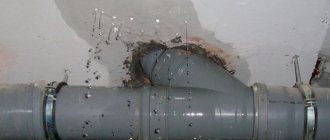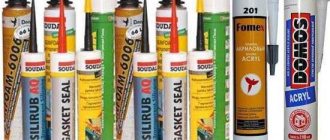Is it possible to add water to the cooling system?
Of course you can! Why not - but your long-running engine will require repair after a few thousand kilometers! And this is natural. There are several reasons for this:
- Water oxidizes metal walls - radiators, pipes, engine block, etc., which will eventually lead to rusting. We will provoke excess heating of the unit.
- Afterwards, rust may precipitate, which will lead to clogging of the cooling channels. The engine will overheat.
- Water already boils at 100 degrees Celsius, which cannot effectively cool the engine.
- Water freezes in winter - if you miss it, it will simply break the system.
- Some Japanese and European cars simply will not start with water; they have a sensor that determines the quality of the liquid.
Now from personal experience - I myself know how the radiator rusts and clogs after using water, I did it on my Moskvich 2140, many years ago. So no need to pour! It is not right.
Antifreeze - composition
Ever wondered what it consists of? What is its composition? Essentially it's just:
- Alcohol – methyl (or isopropyl) is used, it is poisonous and should not be drunk! Previously, of course, there were compositions with ethyl alcohol, but our compatriots drank them for a good cause, so now only “methyl”.
- Water - here its larger volume, usually about 60 - 70%, it all depends on the concentration and temperature threshold.
- Surfactants – detergents, fight against poplar buds, flies, on the windshield, etc.
- Dyes - they are the ones who paint the “antifreeze” blue, so similar to antifreeze.
- Flavorings – give the anti-freeze a pleasant smell – Christmas tree, banana, strawberry, etc.
The whole composition, as you can see, is quite “primitive”, but essentially nothing more is needed - for washing glass.
So what happens if you fill it with anti-freeze?
Now we come to the most interesting part - the outcome, so what happens if you pour anti-freeze liquid into the cooling system?
Let's imagine this hypothetically, because I do not encourage you to do this:
- When the engine warms up, methyl alcohol will quickly begin to evaporate, and as we remember, it is “poisonous”, that is, you will breathe it inside the car, because the stove sucks in air from the front. Possible poisoning.
- This “slurry”, which is left without alcohol, can simply freeze even at sub-zero temperatures.
- The surfactants that are in the composition will begin to foam wildly (the pump will begin to whip it up), essentially these are washing powders - foam will creep out of the radiator into the cooling system and the tank, which will quickly freeze at minus temperatures, forming traffic jams and “airing”! Engine overheating is guaranteed.
- Perhaps it will quickly eat rubber gaskets and other sealing elements - who knows what is in the composition.
- The walls of the engine and pipes will begin to oxidize from the same surfactants.
- If motor oil gets into the engine system, the antifreeze will not be able to “overcome” it; it is not designed to remove oil. But antifreeze or antifreeze would simply absorb the oil into its composition.
If you don’t want to “ruin” your engine QUICKLY, don’t pour anti-freeze into the cooling system, it’s simply dangerous! It is not designed for such operating conditions.
On the way, there may be a need to fill the cooling system with another liquid other than antifreeze, for example, if the radiator is broken, and the system is simply leaking - then just fill it with water, this is much more correct. But then, when you arrive at your destination, fix the cooling system, flush it, and fill only with antifreeze - antifreeze, this is the most correct way.
Don't do nonsense - NEVER pour anti-freeze into the cooling system. THIS IS COMPLETE BULLSHIT! Failure of your unit is almost guaranteed, not immediately, but after some time.
I hope I explained it popularly, if it’s not entirely clear, watch the video - just about the complex.
This is where I end, read our automotive website.
( 9 votes, average: 4.67 out of 5)
Often, novice drivers ask if it is possible to use antifreeze instead of antifreeze. Everyone has their own reasons for this. Most often, non-standard liquids are used when it is necessary to get to the nearest populated area, but sometimes people simply add the first liquid they come across to antifreeze, without thinking about the consequences. After which they have to capitalize on the power unit. A rarer case is the use of anti-freeze liquid for glass in order to save money. This approach is not only incorrect, but also dangerous for the engine. Well, the amount saved can be considered very conditional.
What happens if you pour coolant into the washer reservoir?
There is nothing wrong with coolant getting into the washer reservoir instead of anti-freeze. As you can see, the compositions of these liquids are almost the same, so there will be no negative impact from antifreeze either on the washer barrel or on the windshield of the car. Moreover, due to the presence of various additives in antifreeze, it will have a positive effect on the washer system as a whole. Additives will minimize the risk of corrosion in the metal contained in the pump and injectors.
Please note: Despite the fact that antifreeze will have a positive effect on the metal of the washer system, this does not mean that it needs to be specially poured there. Once a regular anti-freeze agent gets into the system, it will quickly wash away the formed layer of additives on the metal elements, so there is no particular point in such an action.
There is only one disadvantage when pouring antifreeze into the washer reservoir - economic. Coolant is about five times more expensive than anti-freeze. This is due to the fact that the ethylene glycol used in it is much more expensive than the alcohols used in antifreeze. Also, the price of antifreeze includes various additives that are not used in antifreeze because they are unnecessary.
Antifreeze, in addition to not freezing at a certain negative temperature, must also withstand the operating temperature to which it is heated, and this is above 100 Celsius (this is possible, since the cooling system of most modern internal combustion engines is a closed type, and there are two valves on the radiator cap) ..
The anti-freeze agent consists mostly of alcohols, which will begin to evaporate before reaching operating temperature, and the remaining additives form carbon deposits. The internal combustion engine will begin to boil, an air jacket will begin to overheat, and if the internal combustion engine does not respond in a timely manner, it will fail.
Any non-freezing liquid is made on the basis of tasol. Tasol was developed back in the days of the VAZ car, when salts were added to antifreeze to prevent corrosion due to ethylene glycol. Essentially they mix water, ethylene glycol and salts. The department was called TOS, which developed it, hence the name.
The most commonly used is ethylene glycol. Less commonly propylene glycol. The resulting solution, firstly, boils at a temperature above 100 degrees, and secondly, freezes at a temperature of minus 40 degrees. A very convenient thing.
Now about the antifreeze. This is windshield washer fluid. It is made from any rubbish that does not freeze at low temperatures. Most often containing alcohol. Usually based on methyl or ethyl alcohol with the addition of a small amount of washing powder to remove oil from the glass. Yes, this thing freezes at 20 degrees below zero, but it boils out of the engine at the boiling point of alcohol, which is about 80 degrees. And as soon as the alcohol boils away, your anti-freeze will freeze and tear it apart when the engine stops. Therefore, you should not experiment.
Of course, if there is an accident on the road and you need to get to the nearest populated area, and there are “no cars, no steps, just wind and snow,” then you can top up the anti-freeze and get to your destination. But immediately upon arrival, drain and fill with normal TASOL.
I didn’t experiment with anti-freeze, but when all the fluid leaked out of the hydraulic clutch system, I filled it with TASOL (there was nothing else at hand) and drove home. True, I didn’t leak it right away, and then regretted it, but that’s a different story.
Compound
Is it possible to use antifreeze instead of antifreeze? The answer to this question should begin by considering the composition of the glass fluid, as well as antifreeze. This will allow you to understand the principle of operation of these technical fluids, as well as the difference between them.
The basis of antifreeze is ethylene glycol
, or other higher alcohol. Also, various additives are added to antifreeze that prevent oxidation and destruction of parts of the power unit and cooling system. In addition, there are substances that increase the boiling point of the liquid. A small amount of water is present. The exact composition and proportions are usually not disclosed by the manufacturer, but a simple listing is enough for us.
Anti-freeze products are made from water diluted with isopropyl or methyl alcohol. Soap additives are also added there, which make it possible to more effectively clean the windshield of dirt. This is the simple and understandable composition of non-freezing washer fluid.
Content
Is it possible to use antifreeze instead of antifreeze? The answer to this question should begin by considering the composition of the glass fluid, as well as antifreeze. This will allow you to understand the principle of operation of these technical fluids, as well as the difference between them.
The basis of antifreeze is ethylene glycol
, or other higher alcohol. Also, various additives are added to antifreeze that prevent oxidation and destruction of parts of the power unit and cooling system. In addition, there are substances that increase the boiling point of the liquid. A small amount of water is present. The exact composition and proportions are usually not disclosed by the manufacturer, but a simple listing is enough for us.
Anti-freeze products are made from water diluted with isopropyl or methyl alcohol. Soap additives are also added there, which make it possible to more effectively clean the windshield of dirt. This is the simple and understandable composition of non-freezing washer fluid.
Antifreeze in the radiator
To better understand why this liquid cannot be added to the radiator, let’s look at an example of what consequences await the engine and driver when using an anti-freeze agent:
- This liquid contains a large amount of water. Accordingly, the processes of oxidation and corrosion
in the engine cooling jacket will be significantly accelerated. This will speed up the need to repair the power unit; - The alcohols used in antifreeze evaporate at temperatures from 65°C
(methyl alcohol) to 8
2°C
(isopropyl alcohol).
That is, at engine operating temperature, the alcohol from the liquid will evaporate. This will create increased pressure in the system. The result may be a swollen expansion tank
, or a torn radiator cap. Also, do not forget that when the heater is on, fumes can enter the cabin. This will cause poisoning; - If you do not get poisoned during the trip, and the radiator cap of your car does not go on a short flight, then you should not relax. Many adventures await you ahead. As a rule, alcohol evaporates during even a short trip. As a result, water with a small admixture of soap scum remains in your radiator. As is known, freezing of pure H2O occurs already at 0°C
.
In practice, the engine cools down slowly; water in the radiator freezes at a temperature of minus 3-5°C
. That is, even with a slight frost, you risk freezing the cooling system. This will result in a complete repair of the system; in the worst case, the engine will need to be replaced; - But, if you are lucky and none of the described negative phenomena have occurred, then you will still have problems with the engine in the near future. It's all about the soap solution. The pump whips it into foam, which clogs the channels and forms air jams. As a result, normal engine cooling is disrupted. Even if you drain the liquid and add normal antifreeze, the problem will not go away. You will need to flush the engine and also remove plugs by blowing out the system, which is not so easy.
In addition, there is a risk of damage to the rubber gaskets; the substances included in anti-freeze products are often aggressive to rubber and some types of plastic. You shouldn’t be surprised that after such a procedure, strange leaks from the radiator will appear.
One conclusion can be drawn from all this. You should not use anti-freeze as an alternative to antifreeze. Of course, if your goal is not to ruin the engine. There are a large number of alternative options.
Is it possible to pour antifreeze into aluminum radiators?
Every owner who has installed aluminum radiators in a house or apartment is concerned about extending their “life,” the efficiency and safety of their operation. Often the answers lie in the quality of the coolant.
In apartment buildings connected to a centralized heating system, there is no need to talk about the composition and Ph level of the water, since after it runs under pressure through the numerous pipes of the heating main, suspensions and dirt are constantly present in it, which affect it.
It’s a different matter when it comes to an autonomous heating system, which gives a person the right to choose what to use, water or special antifreeze for aluminum radiators.
Consumers are so accustomed to using water as a coolant that they do not even suspect that there are liquids of better quality. Water's biggest advantage is its cost and non-toxicity, but otherwise it can be an enemy for a heating system. Its ability to cause corrosion in metals has “ruined” more than one generation of radiators.
In addition, in the event of an accident on the heating main in winter, when the heating is forced to not work, it can freeze in the pipes even at zero temperature. Its ability to expand, both when frozen and heated, causes them to rupture.
Antifreeze, enriched with special additives for use in heating systems, has some advantages next to water, but it also has negative qualities:
- This coolant freezes at -70 degrees.
- It does not harm aluminum, which is very important for such a “sensitive” metal.
- It has a good level of thermal conductivity, although it takes a little longer to heat up than water.
These were the positive qualities of antifreeze. Among its disadvantages:
- It has a higher viscosity, so to move it through the heating system you need a fairly powerful boiler.
- The fluidity of antifreeze poses a threat if the integrity of the joints or elements of the heating network is compromised.
- Antifreeze is toxic, so precautions should be taken when using it.
Many consumers wonder, knowing about these shortcomings, whether it is possible to use antifreeze in aluminum radiators. In this case, it is even preferable when it comes to an autonomous heating system. The durability of this coolant is enough to heat a house for 10 winters, which in itself is good news. During this period, aluminum batteries do not change at all under its influence, which also has a positive effect on their service life.
Depending on what substance is added to distilled water, the technical characteristics of antifreeze change.
- Glycerin works well as an additive; it is non-toxic and highly soluble, which allows it to be used in the system for a long time without fear of precipitation.
- Ethylene glycol-based antifreeze is the cheapest and most toxic. The second indicator concerns its ingestion, when it can lead to death. If you handle it carefully and check the system for integrity, it will not cause harm and will serve for a long time inside aluminum radiators.
- Propylene glycol is the best addition to distilled water in the production of antifreeze. It is non-toxic, does not produce residue, and its only drawback is its rather high price.
Since ethylene glycol-based antifreezes are very popular due to their cost, before purchasing such a product, you need to check its compatibility with the heating system. Such a carrier is used exclusively in autonomous systems with a single-circuit boiler, since if it gets into water, it can cause serious poisoning, even death.
Antifreeze containing ethylene glycol cannot be used in open heating systems. In the case of fumes, the damage can be equally irreparable.
On the other hand, coolants that include propylene glycol or glycerin are completely safe and can be used in all types of individual heating systems.
In order for the coolant to be truly effective, you should know which antifreeze for aluminum radiators is optimal.
- Any type of antifreeze has a heat capacity lower than water, so more radiator sections will be required.
- The battery size should also be different. Since this coolant expands greatly when heated, it needs 50% more capacity than water.
- You should make sure that the boiler in the heating system is suitable for working with antifreeze.
- All joints need to be checked and made sure that the seal is not broken. If flax fiber is used as additional gaskets in the heating network, it will have to be replaced with rubber analogues.
- Antifreeze is not friendly with zinc, so you need to check all fittings and pipes to ensure that there are no products made of this metal among them.
Antifreeze coolant does not have to be purchased at the store. It is quite easy to make with your own hands from distilled water and 40% alcohol.
As professionals advise, a heating system using antifreeze should be planned before installing it. It must take into account such nuances as the power of the boiler, the material of the pipes and shut-off devices, the presence of an expansion tank through which the coolant is supplied to the system.
If the product is introduced into a system that previously operated on water, then a lot of work will have to be done to recalculate the power and size of its radiators, thoroughly rinse or replace the pipes.
If you need to add coolant to the heating system, you can only use the same brand as when filling it for the first time. Different types of antifreeze enter into a chemical reaction, causing the formation of sediment, and the additional additives they contain will be neutralized.
To summarize, we can say that non-freezing coolant has a number of advantages that attract many consumers. Thanks to antifreeze, aluminum radiators last much longer. It is important to follow safety rules and not use the product without protective gloves, and in the case of an ethylene glycol-based carrier, also a mask.
When installing a heating system at home, you should not only choose the right pipes and radiators, but also pay attention to the coolant. Let's find out which coolant to choose for aluminum radiators, what conditions for using such liquids exist.
If the room space is more than 20 sq.m., then installation of an additional radiator is necessary.
Installation of aluminum radiators.
The most common coolant for a heating system is water, but it sometimes leads to numerous difficulties. This is not only corrosion, but also the formation of scale, the need for more frequent cleaning of the system. In addition, water freezes already at temperatures close to zero degrees, pipes and individual circuit elements can simply burst due to thermal expansion. Therefore, it is important not only to choose the right batteries, but also to use a non-freezing coolant. Among the advantages, it is necessary to note complete safety for humans. If the system leaks, there will be no harm to health, while antifreeze is poisonous.
As a coolant, you can use not only ordinary water, but also specially produced antifreeze. Such mixtures do not freeze even at low temperatures, without changing their qualities at all. Each variety has its own limits, this must be taken into account when choosing.
Antifreeze contains special additives that are inhibitors of corrosion and various mineral deposits.
Installation diagram of an aluminum radiator.
But when purchasing, you should choose exactly those compounds that are suitable specifically for aluminum heating radiators. But such coolants also have their drawbacks:
- heat capacity is fifteen percent lower than that of water;
- high viscosity, that is, a pump is required to ensure circulation in the system;
- when heated, strong expansion is observed;
- fluidity is 50 percent higher than that of water, that is, high demands are placed on sealed connections;
- ethylene glycol antifreezes are poisonous and can only be used for single-circuit boilers.
You can make your own radiator mixture. To do this you will need: distilled water and 40% ethyl alcohol.
To use antifreeze in a heating system, it is not always possible to fill in ready-made commercial mixtures. In this case, you can use a coolant that can be easily prepared with your own hands. you ask how is this possible? Everything is very simple, this coolant is a non-freezing mixture of distilled water and forty percent ethyl alcohol. Such antifreeze, prepared with your own hands for the heating system, has the following characteristics:
- the viscosity of the liquid is slightly higher than that of water, but much lower than that of commercial antifreeze;
- fluidity is less than antifreeze, which makes it possible to somewhat reduce the requirements for the tightness of circuit connections. Rubber seals are not damaged when using this particular liquid;
- Alcohol-based mixtures have another advantage, making them an excellent choice for metal radiators. The fact is that alcohol prevents the development of corrosion, and this is important for systems whose destruction can lead to a variety of troubles;
- in this case, it is recommended to use hard water for the heating system, which, together with alcohol, prevents the formation of scale on the internal surfaces. The sediment is formed in solid form; during preventive flushing it is very easily removed from the system;
- when the alcohol content in the mixture is 30 percent or more, it does not evaporate separately;
- The boiling point of the alcohol coolant is approximately equal to the value for ordinary water. That is, when the temperature rises to 85 degrees Celsius, it does not boil with the formation of large masses of steam;
- alcohol in the coolant composition reduces thermal expansion, that is, when freezing, heating pipes and other elements are not damaged.
If you have to choose between water and an alcohol mixture, many experts recommend giving preference to the second option (if the boiler design allows this). The proportions of this composition are calculated based on what temperature values are planned:
If for some reason the boiler is turned off, be sure to drain the hot water from the radiator, otherwise the pipes may burst.
- when the temperature drops to minus 10.6 degrees, the alcohol content should be 20.3 percent;
- when it drops to minus 23.6 degrees, the alcohol content is 33.8 percent;
- when freezing to minus 28.7 degrees, the alcohol content should be 39 percent;
- when reduced to minus 33.9 percent, the alcohol content is 46.3 percent.
When preparing coolant for aluminum radiators, the volume must be calculated based on the fact that one liter of 96% ethyl alcohol contains 960 ml of anhydrous alcohol. To obtain a 33% alcohol solution, you need to divide 96 by 33, which will give a volume of 2.9 liters. When adding 2.9 liters of water to one liter of alcohol, we obtain a 33% alcohol solution, which is an excellent coolant, poured into an aluminum radiator for the heating system. The resulting solution will not freeze even at temperatures down to minus 22.5 degrees.
When should you not use antifreeze? But it is not always possible to use such a convenient and effective coolant as antifreeze for a heating system. If you are still choosing what exactly to use, consider the following factors:
Calculation of the required radiator power.
- It is strictly forbidden to take antifreeze if ion (electrolysis) boilers are used. In them, heating is carried out by passing current through the entire volume of the boiler tank, and this is unacceptable for antifreeze. When designing a home heating system, make sure that it can be used with a certain type of coolant;
- Antifreeze cannot be used in an open system. But in this case, such a ban applies only to those mixtures that are produced on the basis of toxic ethylene glycol; the rest can be used in open circuits, if there is a manufacturer’s indication for this;
- You cannot reduce the temperature to more than minus 20 degrees. This can seriously reduce the characteristics of the additives included in the composition, that is, pockets of corrosion will appear inside the system and scale will appear;
- When making hermetic connections, it is not recommended to use linen winding, which is coated with ordinary oil paint on top. When using antifreeze in heating aluminum radiators, it is allowed to use linen winding only with sealants, since oil paint is easily corroded by antifreeze, and this leads to a complete loss of tightness;
- Antifreeze cannot be used when galvanized fittings and pipes are used for the heating circuit;
- When the boiler heats the coolant to a temperature above 70 degrees Celsius, antifreeze can no longer be used. This value is the limit for most of these mixtures, which have the highest thermal expansion at higher temperatures.
When choosing antifreeze for aluminum radiators, you need to remember some conditions for working with it. These rules are mandatory for use; they will make the operation of the circuit not only more efficient, but also safer:
- The heating system must be equipped with a more powerful circulation pump than is required for conventional water heating. If the length of the circuit is quite large, then it is necessary to install an external installation of the circulation pump;
- installation of a special expansion tank is required, that is, a capacious expansion tank, the volume of which will be approximately twice that required for a traditional water circuit;
- It is recommended to use large-volume aluminum radiators, as well as heating pipes;
- you cannot install automatic air vents; when using antifreeze in the system, you can only install manual taps, for example, Mayevsky;
- When making detachable connections, you can use sealing gaskets only made of paronite, chemically resistant rubber, or Teflon. Many experts advise using linen winding, which is sealed with a sealant that is resistant to ethylene glycol (if a coolant based on it is used);
- It is not recommended to dilute antifreeze with water, but if this is allowed by its composition, then you can only use purified, distilled water. Melt and rain water are absolutely not suitable for this;
- Before pouring antifreeze for aluminum radiators, it is necessary to carry out preparatory work. The entire circuit, including the boiler, should be flushed with water. The timing of replacement is regulated by antifreeze manufacturers, but experts recommend doing this once every two to three years; you cannot leave the coolant in the system for a longer period of time;
- After antifreeze is poured into the system, you should not immediately put a very large load on the boiler, that is, put it at a high temperature. In this case, it is recommended to increase the temperature gradually so that the coolant has time to warm up smoothly. Such a liquid has a lower heat capacity than water, so this condition must be strictly observed.
Special mention should be made about the water coolant. If in cold weather, for various reasons, the boiler is stopped for a long period, then it is necessary to drain all the hot water that may be there from the heating system in order to prevent rupture of the pipes.
Heating a home: how to choose a coolant for a radiator? When choosing antifreeze or any other coolant for a heating system, numerous factors must be taken into account. This must be done at the design stage of the entire heating system, since the water system is not suitable for the use of antifreeze.
If the temperature in the cold season in the general circuit does not fall below five degrees Celsius, then it is best to prefer a type of coolant such as water, but all salt compounds must be removed from its composition as much as possible. When the temperature in the house is expected to drop to sub-zero levels, only antifreeze can be used, since the water will simply freeze under such conditions. To avoid freezing, you can completely drain all water from the heating system, but there is one serious drawback. The fact is that the radiators will fill with air, and this will lead to corrosion in the presence of high humidity.
There is another way to avoid freezing by using water as a coolant, but for this it is necessary to build in special electric heating elements, which will be controlled using temperature sensors or an installed remote control. This option allows you to maintain the temperature level in the system above 5 degrees Celsius, but the cost of the heating circuit increases many times, that is, it is cheaper to immediately install a system designed for antifreeze. When choosing the required antifreeze for the circuit, you should pay attention to the following characteristics:
- extremely low temperature that can be maintained by the coolant;
- the composition of the liquid, its purpose, that is, for which system it is intended;
- purpose of antifreeze. Is the coolant intended to work in aluminum radiators, how does it interact with plastic pipes, rubber, steel elements, etc.;
- length of time for using antifreeze;
- coolant safety. You should pay attention to how safe the liquid is for humans if it is necessary to drain it after its service life has ended).
But the color of antifreeze for radiators does not matter at all, it simply shows what brand the liquid belongs to.
The choice of coolant when installing a heating system is a fairly important part of the operation of the entire circuit. The efficiency of home heating, its safety, and service life depend on the right purchase. Today, for aluminum radiators, which are becoming increasingly popular, several types of coolants can be used. This is ordinary water, antifreeze based on various components and a special mixture of water and ethyl alcohol. The choice of coolant largely depends on what conditions of use of the system are observed, since it is not always possible to fill it.
What to do if there is a leak?
So, having looked at the features of using antifreeze fluid in a radiator, we move on to the question of what to do if a fluid leak is discovered along the way. Experienced car enthusiasts keep a small supply of coolant in the trunk for such cases. A liter bottle is enough. Please note that some types of modern antifreeze are not recommended to be mixed. Therefore, check in advance which variety you are using. This is especially important for new cars. If you have such a reserve, there will be no problems with a lack of coolant; you can always make up for the deficiency. But, do not forget to identify the cause of the leak, it is good if it is evaporation, worse if it is depressurization.
Don’t forget to drain the water and antifreeze mixture after arriving home. The freezing point of such a solution is lower, which can lead to defrosting of the system. Be sure to flush the system to remove salt deposits. After this, antifreeze is added. It is not possible to completely drain the water; there are several different methods for this.
Conclusion
. Almost every car enthusiast has encountered a lack of coolant in the car radiator. In this regard, the question often arises whether it is possible to pour antifreeze instead of antifreeze. In practice, doing this is strictly prohibited. Using this option will most likely lead to serious problems with the engine.
Popular publications
latest comments
You know, the information is nonsense, it carries absolutely no meaning, but for the sake of experiment it will be useful to some beginners. In general, I get a lot of what I consider “crazy” questions, such as anti-freeze in the cooling system. And another popular one is antifreeze in the washer reservoir; many beginners fill it out of inexperience!
What you need to know when replacing a windshield washer
Maintaining the windshield washer system does not require much effort, but it is better to monitor and service it regularly to prevent blockages, traffic jams or ice from appearing in the winter. Important to remember:
- The system should be pumped periodically to remove air and water from it. This should be done before each new anti-freeze fill.
- There should always be a container with 3-4 liters of windshield washer fluid in the trunk to top it up if the reservoir is empty in the middle of the road.
- There is no need to fill the washer reservoir to the top. If the anti-freeze suddenly freezes, you should have room in the tank to add hot water, alcohol or anti-freeze concentrate to melt the ice.
- Antifreeze concentrate can be diluted if there is no serious frost or thaw outside, but the liquid and water should be mixed not in a tank, but in a separate container. This way you will protect the system from accidental incompatibility of components and will be able to control the concentration of the finished solution.
- If you accidentally poured low-quality anti-freeze into the tank, you should drain it completely. If you poured in a liquid with an inappropriate freezing point, you can simply add concentrate.
In conclusion, it should be noted that draining and filling windshield washer fluid in a car is a simple procedure that you can handle without outside help. In winter, replacing a windshield washer is more difficult, as there is a risk of freezing the liquid in the reservoir and pipelines, damaging the washer pump, or breaking the system's electric motor. Therefore, it is important to carry out all stages of work consistently and carefully.
Be sure to pay attention to the quality, characteristics, freezing point and seasonality of the windshield washer fluid, do not leave water in the windshield washer lines and do not let the system freeze in the cold.
Anti-freeze
This is a liquid that is designed not to freeze at different temperatures, so that it can wash your windshield even in sub-zero temperatures.
The composition of the antifreeze is simple - it is alcohol + water + aromatic or color additives. Alcohol prevents this liquid from freezing, and the more of it, the lower the freezing point.
Only three types of alcohols are used in washer fluid:
- Isopropyl is industrial alcohol, poisonous, if you drink about 100 - 200 ml, it leads to lethal consequences.
- Methanol (methyl) alcohol, a simple monohydric compound, is also poisonous; if you consume about 100 ml, it is fatal.
- Bioethanol is an alcohol that is harmless to the body, similar to medical alcohol, and has been used in the EU since 2012 as a substitute for toxic competitors.
To be fair, it is worth noting that they used to use medical or food alcohol, but since our “folk” car enthusiasts began to obtain alcohol from it and then drink it, they banned it.
To these alcohols, ordinary tap water is added, as well as flavorings and blue dyes; sometimes compounds are added that help wash off stains on the glass, for example from tree buds, midges, etc. This is how we get the non-freezing liquid that we pour into the washer reservoir. Nothing beyond natural.
What is anti-freeze
Before moving directly to the issue at hand, you need to understand the differences between liquids - antifreeze and antifreeze (coolant, antifreeze).
Anti-freeze, as the name suggests, is capable of not freezing at low temperatures, and its task is to clean the car windshield at negative ambient temperatures. Antifreeze consists of the simplest elements - alcohol, water and various additives (aromatics, dyes, etc.). Since water contains alcohol, it does not freeze even at low temperatures, and the higher the concentration of alcohol in the anti-freeze, the lower the temperature it is able to retain its properties.
Anti-freeze products can be divided into three types, depending on the alcohol used in them:
- Isopropyl. Alcohol is harmful to the human body and should never be taken orally. Even if you drink 100 ml of such alcohol, it can be fatal;
- Methanol. Alcohol, which has a simple monohydric composition, is also toxic to the human body;
- Bioethanol. Alcohol is relatively harmless to the human body, similar in its characteristics to ordinary medical alcohol. Used in good anti-freeze products.
Please note: In the late 90s, ordinary medical alcohol was actively used in antifreeze. But due to the massive consumption of this liquid “internally”, which was cheaper than alcoholic beverages due to the lack of excise stamps, over time this anti-freeze was banned.
One of the three types of alcohols listed above is mixed with water, the liquid is colored with ordinary dye, some compounds are added to improve the quality of cleaning, and from this an anti-freeze product is obtained.
TOSOL (antifreeze)
Now I will talk specifically about our antifreeze (because it is often confused because of its color) or G11 antifreeze.
The composition also includes alcohol, distilled water, additives and dye.
The alcohol here is propylene glycol (or varieties of other glycols). This is a dihydric alcohol, also toxic; if drunk, it can also be fatal.
The additives here are designed to combat corrosion; they either envelop the walls of the pipes and other elements of the cooling system, or they already fight pockets of rust.
The dye is of an informative and distinctive nature and does not represent any technical characteristics.
The water here is distilled, and not ordinary tap water - this is necessary to prevent scale from forming inside the cooling system.










